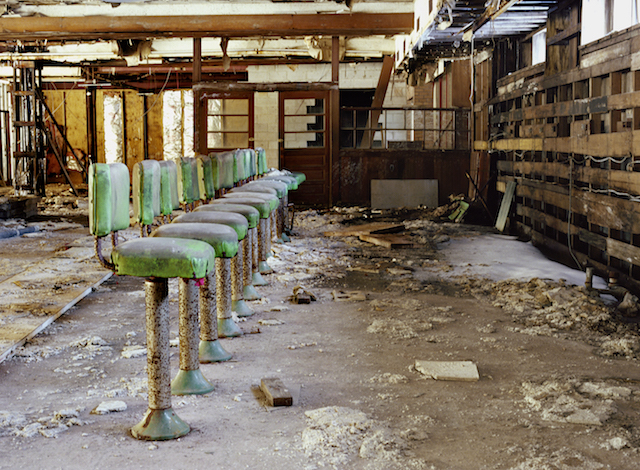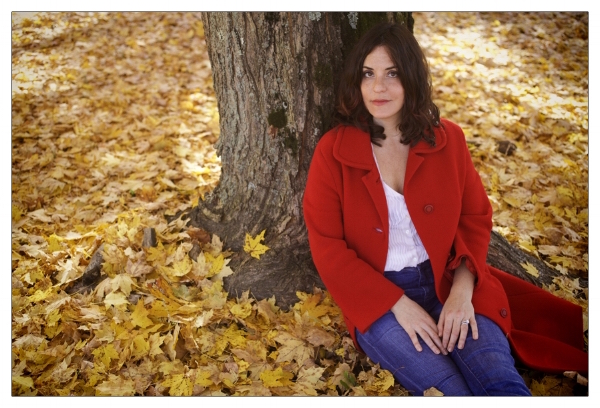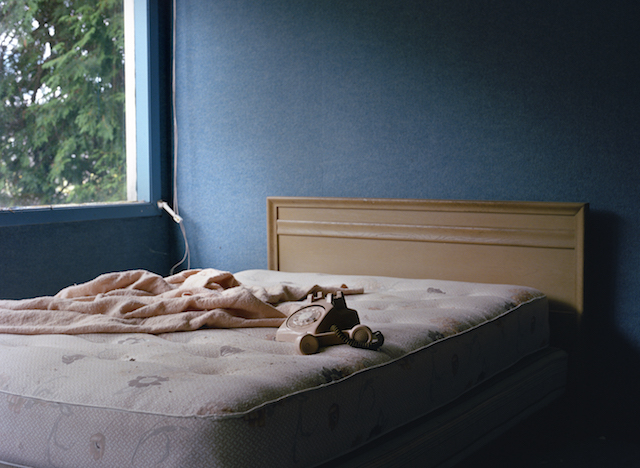(AMHERST, Mass.) – Photographer Marisa Scheinfeld will speak about her years-long project documenting the ruins of the once vital resorts in the Catskill Mountains and sign copies of her new book, “The Borscht Belt: Revisiting the Remains of America’s Jewish Vacationland” (Cornell University Press) at the Yiddish Book Center in Amherst, Mass., on Sunday, April 2, 2017, at 2pm.
Scheinfeld’s photographs capture the lost world of the Catskills resorts in images of entropy and decay, as if the hotels were suddenly and inexplicably abandoned, with all evidence of human life extinguished in one fell swoop. One imagines the places having been emptied out in the wake of sudden natural disaster, environmental calamity, or war – instead of the particular socioeconomic changes, e.g., cheap airfare to Florida, that made them no longer attractive to their clientele or even viable. While on the one hand Scheinfeld’s images reek of ghostly devastation, on the other hand they boast their own post-apocalyptic beauty, filled with a haunting presence and eerie echoes of what once was.
Growing up in the Catskills, Marisa Scheinfeld spent many a summer day swimming in the pools and lakes of Sullivan and Ulster County, home to the once bustling resort area of hotels and bungalows affectionately known as the Borscht Belt. Surrounded by beautiful mountains and sublime natural beauty, she reveled in the many stories told by family and friends about the “Golden Age” of the region, a four-decade period lasting from the 1930s through the 1960s.
It was the stuff of legends. Both a retreat for high-society as well as a popular family vacation spot, the Borscht Belt was a veritable proving ground for many of our country’s most revered comedians from Jack Benny, Lenny Bruce, and Milton Berle to Mel Brooks, Rodney Dangerfield, and Woody Allen. It was also for years the preeminent entertainment destination for such musical acts as Duke Ellington, Louis Armstrong, Barry Manilow, Sammy Davis, Jr., Barbara Streisand, and Simon & Garfunkel.
Then in the blink of an eye everything changed. Starting in the mid-1970s and culminating in the 1980s, a dramatic reduction in tourism resulted in the closure of hotel after hotel, shutting their doors forever. For years there was hope that these shut doors would reopen once again, but such dreams were never to materialize. And as years passed into decades these shut doors could not put a stop to recurring vandalism, the return of nature nor the ultimate sacrifice of demolition.
They also could not stop Marisa Scheinfeld. Determined to visually document the resorts in their current state of entropy, she worked with friends, strangers, and local government officials to gain access to the ruins of the Borscht Belt. And when she entered what she found was a peculiar beauty.
“I truly feel there is a sense of a new life, a movement and presence in the photographs, and while bittersweet, and at times seemingly even apocalyptic, I think it’s phenomenal,” says Scheinfeld.
 “While photographing a lot of these [hotels], I’d walk in and feel disturbed by the way they looked and their conditions. But I’d also be absorbed and amazed. There was a tragedy and awe going on at the same time.”
“While photographing a lot of these [hotels], I’d walk in and feel disturbed by the way they looked and their conditions. But I’d also be absorbed and amazed. There was a tragedy and awe going on at the same time.”
Scheinfeld’s compelling photographs are compiled in her new book, “The Borscht Belt.” Presenting over one hundred stunning images of dozens of hotel and bungalow sites, this new book takes the viewer deep into the heart of the lost world of the Borscht Belt. Seeing in dramatic and rich full color the ruins of what were once vibrant hubs of human activity evokes curious emotions and feelings, both light and dark.
“The ruin has long been a fascination for photographers — even from the earliest days of the medium’s invention,” says Scheinfeld. “I think that fascination lies largely within a range of the basic ‘wow factor’ that a ruin can evoke, but also, deeper notions about tragedy, loss, absence, growth, what lie before us, what lay ahead – a contemplation of sorts – that often keeps us spinning, with no definitive answer.”
Scheinfeld adds, “Ruins can be metaphors for things that survived, persisted, and persevered despite the fact that everything around them as falling and crashing. Some people might consider them dead, but I see them as active and vital, a powerful force.”



